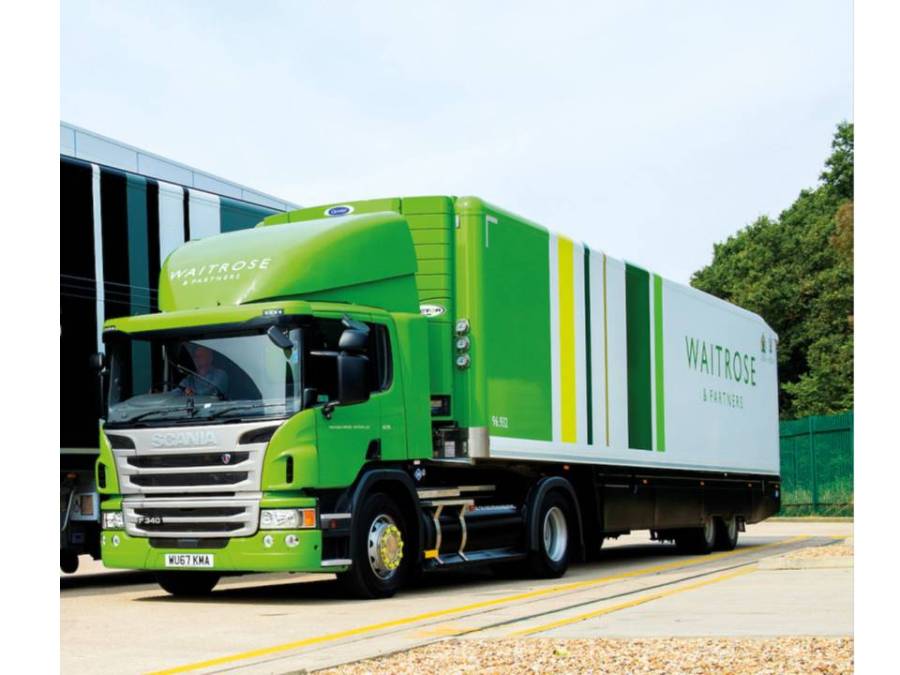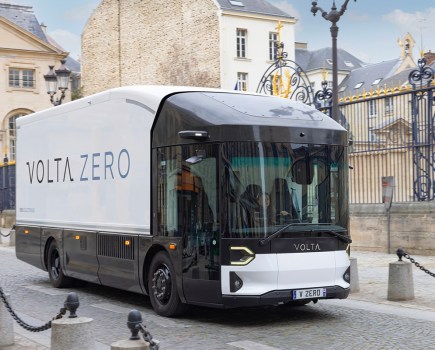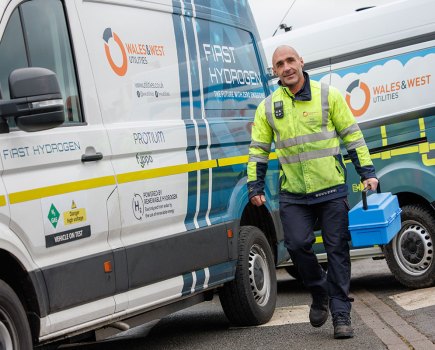Always a pioneering retailer, the John Lewis Partnership has applied the same philosophy throughout its distribution fleet. It reckons its recent gas truck trials have proven a sound business case for moving away from diesel
The green tractors and white trailers of the Waitrose branch of the John Lewis Partnership are a familiar sight. What is perhaps less familiar is the retailer is steadily weaning itself off diesel.
Some 10 per cent of its 600 HGVs (as opposed to its LGV fleet, which is moving to electric traction) are now running on compressed natural gas (CNG).
The objective is to eliminate diesel power entirely from these trucks by 2028 – with a view to being a carbon-neutral operator by 2045.
Such a strategic move is not the result of a decision taken lightly. As fleet manager Justin Laney explains: “John Lewis Partnership began looking at alternative fuels in 2008. We wanted a sustainable, non-fossil alternative to diesel. Initially, plant oil seemed to provide an answer. But our early experiences revealed several drawbacks, including the sustainability of plant oil.”
The firm then looked at as many as 13 other possibilities. Studies in conjunction with Imperial College narrowed the choice to biomethane or biodiesel. Waitrose opted for the latter:
“Biomethane from food waste offered the better option. We began running retrofitted methane trucks, but we halted this for two reasons. First, we realised there was ‘methane slip’ – unburnt methane [a virulent greenhouse gas] escaping to the atmosphere. It was also impractical to retrofit Euro 6 vehicles.”
Going for gas
An OEM solution then presented itself in the shape of a biomethane Scania.
Scania has long experience of supplying natural gas engines for buses. With the advent of Euro 6, has developed gas engines for use on HGV applications.
Waitrose began with a pair of bio-Scanias in 2015. Justin Laney goes on: “We were pleased with the results, especially the 35 per cent saving on fuel costs. For the following year we added 20 further gas trucks. For 2018 we increased this again, so currently we have 60. These are not all Scanias – we run some Ivecos now as well.”
Scrutiny of transport costs has long been a John Lewis preoccupation. In 2012 the company moved to set a speed limit of 85 kmh for all but four of its trucks, trunkers supplying West Country branches.
Justin Laney summarises the firm’s operating objectives: fewest miles, backhaul loads, double-deck and longer trailers where feasible, and in particular aerodynamically shaped trailers. Lower drag means the company can specify smaller engines.
John Lewis worked in conjunction with Cambridge University to smooth the underside of the trailers to develop its now standard low-deck design, curved roof and rounded corners. This resulted in a steady-speed fuel saving of seven per cent – “which we are very proud of,” adds Laney.

JLP has trialled gas trucks for various
manufacturers
Distribution blues
Of course, the Achilles’ heel of any non-diesel fuel is distribution. To refill its 60 gas tractors, an open-access filling station has been built at its site in Leyland, where the trucks are based.
Further filling stations will be constructed to allow future CNG vehicles to run out of the company’s other regional centres.
In 2018, a biomethane CNG tractor cost about £25,000 more than a Euro 6 diesel of comparable specification.
The first, telling difference is the contrast in fuel costs. Over a 200,000 km year, the CNG truck saves £20,000 from the fuel bill. It also creates 83 per cent less CO2 – the equivalent of 100 tonnes per annum.
At present, the CNG engine is more maintenance-intensive than diesel. It has sparking plugs which require changing, and more frequent 30,000-mile oil changes.
On the other hand, CNG requires no AdBlue or particulate filter cleaning. John Lewis is looking for a factory-approved longer-life oil, and in the long term anticipates the service bill for CNG will be comparable with diesel.
Mode of delivery
The retailer could have designed its fleet policy around liquid methane (LNG), but opted for CNG. Justin Laney sets out the pros and cons of both.
“Methane in gaseous form requires more space on the truck. Initially we were limited to a 350-mile range. Subsequently this has increased to 500 miles, which is adequate for the daily distances from the refuelling point we expect to cover.
“For operators working at 44 tonnes, but not returning daily to base and their own refilling infrastructure, buying it in liquid form can be more attractive and LNG offers a 1000-mile range.
Another advantage from our standpoint was the clean filling with CNG. It’s simply push-button like an electric charge. And until now biomethane has had better availability from the grid. Moreover, the trucks don’t need tank ventilation. We also calculate CNG well-to-wheel figures are better.
CNG is also a hit with the drivers – besides the ease of filling, they really appreciate the lower noise level of the gas engine.”
Benefit of experience
John Lewis Partnership buys its trucks outright, services them itself and depreciates them over 7.5 years. A handful is kept on till their ninth birthday for use in the seasonal Christmas peak.
Now with several years’ experience of gas trucks also under its belt, Laney says the only real technical challenge has been reconfiguring the tractor to have enough space for 500 miles.
This involved pioneering carbon fibre fuel tanks, which with Scania’s support it was able to have homologated. As a result, OEMs can now to build to this specification.
This exemplifies John Lewis’s pioneering approach. As first-out-of- the-blocks with wholesale CNG use in the UK, the company has lobbied the DfT extensively to allow full recognition of this transport model in Britain through biomethane certification, and to persuade the Treasury to guarantee fuel duty levels on biomethane.
Cool advantage
Other technical breakthroughs have come too. Waitrose now has 13 trailers with their refrigeration units powered by a truck-mounted alternator.
This eliminates the pollution and much of the noise of traditional diesel fridge motors. It is critical from Waitrose’s point of view to be able to continue to gain access to its inner city stores.
“A single trailer shipment is by far the most efficient way to deliver to these stores.” says Justin Laney “By working with authorities like TfL to obtain quiet truck certification, we want them to exempt our vehicles from the London lorry control scheme.”
The way in which JLP has gone about its move to alternative fuels is an example to other hauliers. As Justin Laney puts it: “We have worked with academia and the Centre for Sustainable Road Freight (CSRF) to establish alternatives to diesel. We have then experimented with what appeared the best options. Having proved the business case to our satisfaction, we have presented it to policy makers.”
“Cleaner, sustainable combustion is in any case the route the DfT wants transport to take in its
‘road to zero’ programme. In presenting alternative fuel in this way we make politicians and civil servants more receptive.”
And, he might add, a regulatory and fiscal environment which suits the company’s chosen direction.






